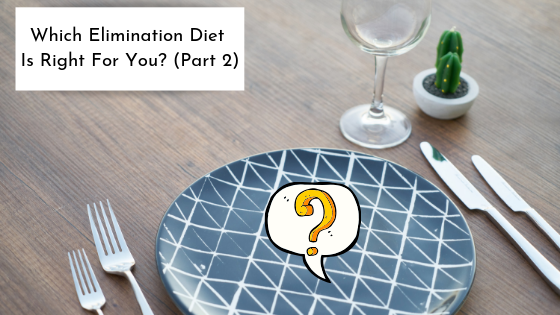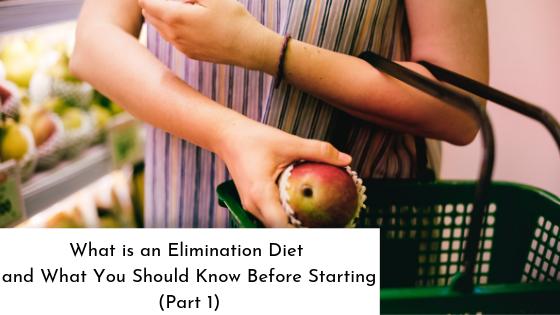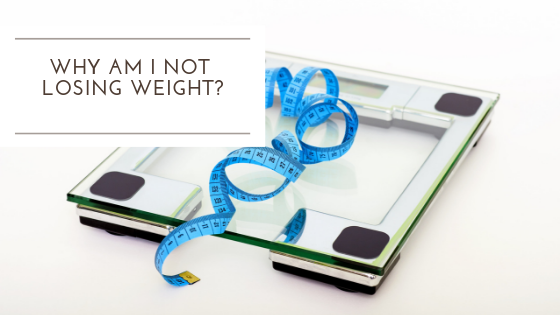|
You can gain a ton of insight into the causes of symptoms if you tune into the messages your body is sending out when you experiment with food. Symptoms manifest long before a disease does, so this is why it’s so important to pay attention to the warning signs your body is giving you rather than masking symptoms with drugs. Further, some of these foods are causing damage to different parts of your tissues, so once identified, you can potentially prevent an autoimmune attack on your body or even reverse the damage done by autoimmunity. In my first post, What is an Elimination Diet and What You Should Know Before Starting, I review the common symptoms of food sensitivities and explain how to do an elimination diet correctly so that you can get the most out of what it can offer. In this post, I’m going to explain the why behind the foods that should be eliminated, where to start based on your current health, and what foods you should add into your diet to help repair your gastrointestinal lining and to nourish you in the process. Foods to Eliminate To keep it simple, you can do it one of two ways: basic elimination or advanced. If you’re someone who feels overwhelmed with the idea of doing a food elimination diet, want to test the water first without diving in, or are dealing with some mild, but annoying chronic symptoms, then starting with the basic food elimination is the route I would suggest going. Most of my clients who start with this elimination notice huge gains in their health pretty quickly. Now, if you have already done a food elimination diet and have not had results, are suffering greatly with digestive issues, or have a full-blown autoimmune attack, then it’s recommended to start with the advanced elimination. There is no right or wrong way to do it; just get started somewhere and build from there if you need to. Basic Elimination (The top offenders) The top two foods that should be eliminated include gluten and dairy. They are by far the two foods that cause the most issues in people. I have personally seen this in practice, and just with the elimination of these two foods, my clients have had profound improvements in their health. The most common association to gluten sensitivity is with Celiac disease. However, what is thought to be more common than Celiac disease is Non-celiac gluten sensitivity (NCGS). NCGS is characterized by both intestinal and extra-intestinal symptoms related to ingesting gluten-containing foods. 1 Symptoms of NCGS includes many, but some common ones are bloating, abdominal pain, diarrhea, epigastric pain, lack of well-being, tiredness, headache, foggy mind, and anxiety. Neurological symptoms from a gluten sensitivity are also common and can include peripheral neuropathy and cerebellar ataxia. 2 A gluten sensitivity, or even Celiac disease can develop at any time in a person’s life, so just because you’re a certain age doesn't mean anything when it comes to food-related issues. Further, the range of symptoms of a gluten sensitivity is vast, so please don’t think the symptoms are limited to just the above. Gluten has not been apart of our diet for very long as the native diet of humans consisted of mostly meat, fruits, and vegetables with very little exposure to grain. Gliadin and glutenin proteins primarily make up the structure of gluten. Gliadin is the component that is rich in prolamine and glutamine, which cannot be degraded by intestinal enzymes and triggers an immune reaction in genetically predisposed individuals. 3 The gluten-free product market has grown substantially over the years. According to Dr. Alessio Fasano, he states that the prevalence of gluten-related issues are on the rise, and based on his study, it seems that prevalence has doubled every 15 years in North America. 4 Why such an increase over the years? Well, there is no clear answer for this. However, some research and experts in the field link this rise to glyphosate. Glyphosate is the active ingredient in the herbicide, Roundup. A study done on Fish exposed to glyphosate showed that they develop digestive problems that are similar to that of celiac disease. Glyphosate has been shown to disrupt gut bacteria in animals, specifically killing beneficial forms and causing an overgrowth of pathogens. Interestingly, the use of glyphosate on wheat in the U.S. has risen sharply in the last decade, in step with the sharp rise in the incidence of Celiac disease. 5,6 My recommendations are to avoid non-organic produce, meat, and grains as much as you can. The Dirty Dozen List ranks the top twelve vegetables and fruits found to have the highest levels of pesticide residue, which is very helpful when you’re trying to make informed choices while out shopping. Having a healthy gut microbiome is essential for health as 70%- 80% of our immune system resides in our gut. 7 Protect your gut microbiome by choosing organic as much as you can. Where is gluten found, and why do some people not fully improve once it’s eliminated? When you hear of gluten, it is typically referring to the protein found in wheat, rye, some oats (must be labeled gluten-free as most are contaminated), barley, and triticale; thus foods containing these ingredients should be avoided on a gluten-free diet. Now, a big reason one may not improve when they eliminate gluten is that they may be consuming other foods that are cross-reacting with gluten. Cross-reactive foods are known to mimic gluten to the human immune system. 8 Casein (milk protein) is the most likely to cross-react and should also be removed at the same time that gluten is removed. This is imperative as many people with a gluten sensitivity also have a sensitivity to dairy. Another reason casein should be removed is that it is one of the top allergen foods in the U.S. In my opinion, you would be wasting your time on an elimination diet if you only eliminate gluten and not dairy along with it. Advanced Elimination In my first post, I discussed how leaky gut is at the root of many chronic illnesses, especially in the development of an autoimmune disease, and is a cause for the development of food sensitivities. Leaky gut is triggered by many things including certain medication like NSAIDs, stress, surgeries, gut infections like small intestinal overgrowth (SIBO), yeast overgrowth, and parasites, as well as challenging foods like alcohol and food sensitivities. When the gut barrier is inflamed and more permeable, it’s not uncommon for the immune system to react to many different foods as undigested food proteins leak through the damaged gut barrier. When someone is dealing with many different symptoms, eliminating these foods can help calm down the immune response and allow them to heal. People who have a full-blown autoimmune attack going on, meaning they’re dealing with many symptoms that are affecting their quality of life, do well when they take a comprehensive approach to a food elimination diet. This diet is well known as the Autoimmune Paleo Diet. In the Autoimmune Paleo diet, the following foods are removed:
All of these foods are either known to cross-react with gluten, are ones that are commonly known to invoke an immune response, inflammatory, or are aggravating to the gut. This diet was designed to heal the gut in addition to helping one determine additional foods they could be causing a reaction. There is a wealth of information on this diet from books to blogs that are extremely helpful when doing an advanced elimination diet such as this. I highly encourage doing your research before eliminating all of these foods or working with a nutritionist that can help you. On average, you will follow this diet from anywhere from two to six weeks, but possibly longer depending on the severity of your symptoms. In my non-autoimmune clients who have noticed an improvement in their symptoms on a gluten and dairy-free diet, but have not had complete resolution of their symptoms, I will consider other potentially problematic foods. This approach is not as comprehensive like that of the Autoimmune Paleo diet, but equally as effective. Other foods that people can commonly be reacting to include grains and eggs. Grains are a common staple in our diet, but we do not need them to survive. Grains are high in lectins and have been shown to degrade the intestinal barrier. 9 Grains that are gluten-free like rice, millet, corn, and gluten-free oats can also cross-react with gluten, just like casein mentioned above. I often suggest removing them to aid in the gut healing process on an elimination diet and testing for tolerance on reintroduction. One of the tests that I use in practice to help those determine other foods that cross-react with gluten that they could be reacting to is Cyrex Labs, Array 4. I will be going over more on this test in my next post, which is part 3 of the blog series. Eggs are a common food allergen in children, but adults can develop a sensitivity to eggs later in life, especially those who have leaky gut, so this is why I often suggest eliminating them to test for tolerance. Keep in mind that when you’re ready to reintroduce eggs, you need to introduce the yolk and white separately as reactions can be to either one. Interestingly, more people tolerate the yolks more than the whites. Now if symptoms don’t improve with the elimination of these top offending foods, I begin to look into other root causes of their symptoms that could be related to things like viruses, bacteria, parasites, small intestinal bacterial overgrowth (SIBO), toxins, etc. Other Highlights on an Elimination Diet To make the most gains from doing an elimination diet, you shouldn’t just focus on removal of the above foods. It’s important to also remove inflammatory foods and replace your diet with the highest quality, most nutrient-dense foods available to you. They will not only help to repair the gut in those with leaky gut, but it will also help provide a powerhouse of nutrition essential for optimal detoxification and cellular health. Inflammatory Foods
Food is powerful medicine. If you need someone to help you get started on a path to improving your health? You can contact me here. In optimal health, Meagan Reynolds Sources
In this three-part blog series, I will be breaking down a lot of information centered around elimination diets that will help you in your health journey. In the first part, I will be discussing what an elimination diet is, why it can be so effective at getting closer to the root cause of your symptoms, and what you should know before starting so that you’re successful. In the second part, I will review the top foods that should be eliminated when you are dealing with chronic symptoms or an autoimmune disease like Hashimoto’s and what foods you should incorporate. And in the third post, I will review when it’s helpful to test for food sensitivities and the lab I use in practice.
Address the Root Cause of Symptoms with an Elimination Diet If you’re struggling with your health and are wanting to reverse disease, lose weight, or put a stop to chronic symptoms, then a food elimination diet may be right for you. Food has a profound ability to either heal us or hurt us. A food that is typically considered healthy like whole grain bread, tomatoes, or oats may be causing a lot of inflammation and tissue damage in someone who has a sensitivity to those foods. If we’re putting things that are typically thought of as healthy into our body day after day that is unknowingly causing inflammation, it will be very difficult, if not impossible in some cases, to overcome chronic symptoms. It is for this reason I always address a clients diet first before moving onto uncovering other root causes for their symptoms that could be related to other things like infections, toxins, or other imbalances in the body. If you’re suffering from chronic symptoms or are overweight, you’re in a state of chronic inflammation, which is directly tied back to the health of your gut. Research has found that when there is a breakdown in one's health, there is damage to their gut known as leaky gut. So, when you eliminate your food triggers, you’re automatically lowering inflammation and taking the first step to healing your gut. Leaky Gut and Food Sensitivities In leaky gut or intestinal permeability, the tight junctions that act as a barrier within the gut are damaged. When this occurs, macromolecules such as undigested food, bacteria, viruses, allergens, and toxins can get through these “junctions” and trigger an immune response.2 Research has strongly linked leaky gut to the development of autoimmune diseases, obesity, and other chronic inflammatory disorders.3,4,5,6 There are many triggers for developing leaky gut, but we will focus on one of them, which is food. Food sensitivities cause irritation and inflammation in the body every time that offending food is consumed. This perpetual cycle of inflammation leads to many symptoms, along with the potential to develop other food sensitivities down the road if not addressed. Food as Medicine Inflammation is driven by sensitivity to foods, so by removing the food, you’re removing the inflammation and allowing your gut and your body to heal. Instead of using meds to mask symptoms, in an elimination diet, you will be using food to uncover symptoms. When you fully eliminate foods that you’re sensitive to and then reintroduce them back into your diet, your body will exhibit certain symptoms to let you know that inflammation is going on and it sounds the alarm. These symptoms can be very vague or very straightforward, but they are typically only apparent once you have reintroduced them after you have fully removed them from your diet for at least two to three weeks. Here is a list of the top symptoms associated with food sensitivities. Common Symptoms of a Food Sensitivity Fatigue Irritability Mood Disorders Joint Pain Bloating Constipation Gas and stomach upset Eczema, acne, and other skin problems Brain fog Weight gain Cold sores Lung or nasal congestion Headaches or migraines ADHD and other behavioral issues in children Difference Between a Food Intolerance/Sensitivity and a Food Allergy Food allergies trigger an acute immune response, and the symptoms typically develop within a few minutes to a couple of hours after the food is ingested. Symptoms can be life-threatening like that seen with anaphylaxis, or the symptoms can just be uncomfortable and result in hives, rashes, or swelling, for example. Food intolerances and food sensitivities are harder to detect because symptoms are not as straight-forward like that of an allergy and can take as long as 24 to 72 hours to develop. The term food intolerance can mean either an immune or non-immune mediated response. For example, lactose intolerance, a condition where the person lacks the enzyme needed to completely digest lactose, is not an immune reaction and does not create the type of inflammatory response and chronic symptoms that we will be discussing in this post. Often, the term food intolerance is used interchangeably with food sensitivity. For the purpose of this article, I will be using the term food sensitivity. Using the Steps of the Scientific Method to Determine Food Triggers You will be using the steps of the scientific method to determine your food triggers. It’s a process and something you don’t want to rush into without fully doing your research because the chances of you failing can be quite high. However, if you’re unsuccessful in your first attempt, don’t worry. Learn from your mistakes and move forward. Here are a few tips to ensure your success: Ask a question: Which foods am I sensitive to? Do Background Research: Everyone responds differently to food, so this is where it can be a little difficult in deciding which foods to initially eliminate from your diet. I suggest starting with the foods that tend to cause people the most trouble and are also the ones they have the most difficultly giving up: gluten, dairy, grains, and eggs. However, in my next post, I’ll be going into more detail on the foods that you should eliminate depending on your set of symptoms, foods that commonly cross-react with gluten if this is one of your triggers, and inflammatory foods that everyone should eliminate when doing an elimination diet. Construct a Hypothesis: Example, if I eliminate gluten and dairy, then my joint pain will go away. Test Your Hypothesis: Removal Phase Ok, folks, this is where it gets even trickier. If you have only eliminated one food from your diet, there is a strong possibility for no improvement in your symptoms. This is because if you’re reacting to a food, then you likely have more than one food sensitivity. It’s best to eliminate all of the top trigger foods at the same time for a minimum of two weeks. However, if you have been suffering from chronic health problems for a long time, you will likely need to eliminate them for a total of four to six weeks before you reintroduce them. For this to be a fair test, you will also need to ensure you’re not accidentally exposing yourself to the very foods that you’re trying to eliminate from your diet. Cross-contamination can occur when dining out or at home, so be sure to discuss your restrictions with those that are in charge of your food prep. Reintroduction Phase: After a period of two to six weeks, and possibly longer depending on your symptoms, you will test your body’s response to each food separately. You will know when it’s a good time to test when your symptoms are gone. If your symptoms are not gone, then you likely have other foods that are triggering an immune response or, very commonly, a pathogen could be at the root of your symptoms. That’s why I find it so important to start with diet, then move quickly onto investigating other root causes for symptoms if no symptom relief. Remind yourself that it’s a process, but you have to start with the fundamentals first. And remember, you never want to reintroduce food during periods of high stress, illness, or active symptoms as this will only interfere with your results.
Analyze Your Data and Draw a Conclusion: After doing this a while now both in myself and with my clients, it’s very interesting to see how symptoms surface once problem foods are reintroduced, whereas there were no symptoms noted while those foods where eaten. Once the immune system is able to rest and recover, it allows for ample energy to exhibit an immune response to that food resulting in apparent symptoms. Once trigger foods are identified, remove them for a minimum period of 3 months before trying to reintroduce and supplement with gut-healing herbs like L-glutamine, Marshmallow Root, and Slippery Elm. Tips for a Successful Elimination Diet An elimination diet can be challenging. But if you shift your way of thinking it can be very empowering. You’re taking control of your health and will likely be doing something that you may have never done before. You will be putting more thought and awareness into your food that can sometimes cause anxiety and unsuccessful completion if you’re not prepared. Here are my top tips to get you through an elimination diet successfully:
Getting to the bottom of food sensitivities can sometimes take time, but everyone’s journey is different. However, if you can commit to your eliminations, you can look forward to a healthier and happier life. If you need help, you can contact me. References
With the New Year, you may be motivated to make yet another stab at your weight loss attempt or have already felt defeated with the progress you’re making. Clients who come to me often eat very carefully, exercise regularly, and feel like they’re doing everything right, but they feel stuck because the weight is not budging. Does this sound like you? Diet and lifestyle are the obvious factors that are driving the weight merry-go-round, but there are other underlying causes that can throw a wrench in your progress. If you’ve already exhausted yourself with diet and lifestyle and are not getting the results that you’re looking for, then tune in. You may be surprised at what’s keeping you from shedding those extra pounds and causing inflammation in your body.
Find Out What Your Food Triggers Are Most people don’t think of trying a food elimination diet if they’re having difficulty losing weight, but this can be very insightful into uncovering your hidden symptoms and a powerful push in dropping stubborn pounds. Food allergies are often easy to identify because it triggers an extreme reaction. However, identifying food intolerances or sensitivities are not easy because the symptoms can be vague. Helping clients uncover food sensitivities is one area I work with in my clients. And often the results they get are extremely shocking once the food is eliminated and then reintroduced properly. Food sensitivity testing can be useful in some cases, but they can also commonly generate false negative and false positive results. The gold standard for testing is by doing an elimination diet to test your bodies response. If you’re new to an elimination diet and don’t know where to begin, then a good base to start from is by taking the foods out of your diet that you frequently eat every single day. For most people, it’s gluten and dairy. These two foods commonly make their way into every meal, if not all three. They are also two foods that I see that cause the most issues in people. Weight struggles can also be a result of an autoimmune disease. Now if you have an autoimmune condition or have already tried a gluten and dairy-free diet and are still experiencing symptoms, then following the Autoimmune Paleo diet can be very helpful in further determining the foods that could be problematic or unhealthy for you. This diet eliminates nightshade vegetables, grains, eggs, beans, legumes, soy, nuts and seeds, and a few others. Now keep in mind as you’re eliminating these foods, you’re also following a nutrient-rich, anti-inflammatory diet as this is key for any diet you follow. You will also want to strictly avoid these potentially reactive foods for a minimum of two to six weeks, and possibly longer before you introduce each one at a time. For more information on how to effectively do an elimination diet, stay tuned for my next post. The Scoop on Thyroid Dysfunction The health of your thyroid has a direct impact on your metabolism. And when your metabolic function is disrupted, you gain weight that is not easily lost. A very classic symptom of low thyroid function is weight gain despite adhering to a low-calorie diet. The body is throwing up a flag saying, “Pay attention to me.” If you’re one of these people, you may have a thyroid problem. I recommend requesting a full thyroid panel that includes TSH, Free T3, Free T4, Reverse T3, TPO Ab, and TGB Ab. You can develop a thyroid disorder at any age, so routinely checking a full panel is recommended if you have a family history or have many classic thyroid symptoms. Unfortunately, many thyroid disorders don’t get caught early leaving many people suffering. This is because their labs fall within the “normal” range when they get tested, or only a TSH test is ordered. What’s considered “normal” for most thyroid markers in conventional medicine is by far not optimal. If you have thyroid symptoms, but your doctor states that everything looks great with your labs, it’s worth your health to seek out a holistic or functional medicine practitioner that can take a closer look for you and possibly address the conditions that caused the thyroid to slow down if that is indeed the case. Further, a lot of people feel that if they get on thyroid medication they will lose weight, but since it doesn’t address the root cause of the thyroid imbalance, it often doesn’t work. Address Gut Infections If our gut health is poor, we suffer. Most chronic diseases, including obesity and weight gain, benefit greatly when we heal our gut. If you think of your gut in terms of a garden, this will help you get a clearer picture of how important gut health is. For healthy plants, you need healthy soil that is balanced with the proper pH and nutrients so your plants can thrive. The same goes for your gut. If the balance of healthy gut flora is disrupted by things like stress, alcohol, high sugar intake, poor diet, and certain medications like ones to suppress stomach acid and antibiotics, then this will lead to dysbiosis, which is just an imbalance of healthy gut flora. Now if your garden has a poor pH, then it increases your chances of developing invasive weeds and may result in increased problems with disease in your plants. Again, the same goes for our gut. If your healthy flora is disrupted, common infections like parasites, Candida, and small intestinal bacterial overgrowth (SIBO) can easily develop. In my practice, I suspect dysbiosis in anyone with digestive issues, which include symptoms of gas, bloating, constipation, diarrhea, indigestion, and reflux. You can test for gut pathogens, but some of the best functional stool tests can have false negatives, so I tend to rely heavily on symptoms. Cleaning up the diet and adding probiotics and fermented foods can help, but it’s often not the fix, especially if you have a very invasive weed in your garden. A more targeted approach would be warranted using antiparasitic and antifungal herbs to properly restore balance. Address Nutrient Deficiencies Nutrient deficiencies are due to many things including certain medications, stress, diet, lifestyle, and heavy metal toxicities. If we’re deficient in a vitamin or mineral, it can create other deficiencies and also affect other body systems including our hormones and our ability to effectively detox. So, if you’re trying to lose weight and you lack certain nutrients, this can slow down your metabolism. Deficiencies can also create many symptoms that one would likely get you prescribed a drug that would further deplete the very nutrient that caused the symptoms in the first place; It’s a vicious cycle! Vitamin D may be the first deficiency caught because it’s commonly the only vitamin that is included in a health screening. Vitamin D is extremely important to address if deficient or suboptimal as this can affect your ability to lose weight. Others important nutrients to look into include zinc, selenium, vitamin A, iron, magnesium, and vitamin B12 because they are all required for the thyroid to function properly, which affects your metabolism. Symptoms and medication history can be used to determine which supplements are appropriate, but testing is ultimately the best, especially if you continue to struggle with symptoms and weight issues. Sometimes testing individual nutrients is all that is needed, but for a more comprehensive approach, I prefer to check a whole panel. I use SpectraCell’s Micronutrient test as it measures 31 vitamins, minerals, amino/fatty acids, antioxidants, and metabolites at an intracellular level. Mind-Body Interventions It’s next to impossible to avoid most of the stress we encounter in our lives often due to a full-time job and family life, but how we view stress and how we handle it can make a significant difference in how it affects our health. Cortisol is the most powerful stress hormone that is associated with weight gain, especially around the belly. Small cortisol surges are normal and healthy to get us through the day, but chronic surges in cortisol not only contribute to weight gain but the inability to lose it too. If you’re constantly analyzing or thinking about negative events, are in an unhealthy relationship, or are miserable at your job, they are all contributing to your weight. Mind-Body exercises like yoga, Tai Chi, breathwork, meditation, and scheduling daily self –care are ways to attenuate the stress response and reduce the risk of stress-induced diseases. They’re also powerful tools in moving your life in a more positive direction so that you’re in a healthier state to make needed changes to your life. However, just like exercise, you have to do it consistently to experience the benefits, so you will want to find something that you enjoy doing that you can commit to. Stick the Course Once you make up your mind to adhere to a specific health protocol, don’t stray from it. And when you do, get right back to it. This will make for easier adjustments if needed to continue your weight loss journey. If you hit a plateau or get stuck with your progress, seek support to get you moving in the right direction. At the end of the day…just remember that every step you take is a step that is moving you closer to your goal. If you feel you need a little extra guidance, you can contact me. |
Hello!I'm Meagan Reynolds- a certified functional medicine practitioner and dietitian located in Nashville, TN. After overcoming my own health challenges with hypothyroidism, I was motivated to create my own practice where I help women reverse their thyroid, gut, and hormonal issues so they can reclaim their health. Archives
July 2023
Categories
All
|





 RSS Feed
RSS Feed